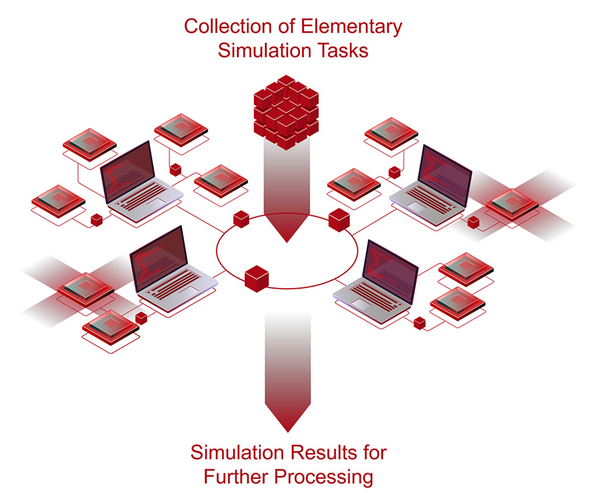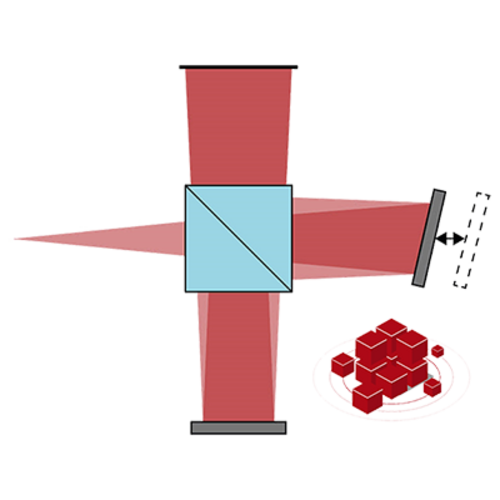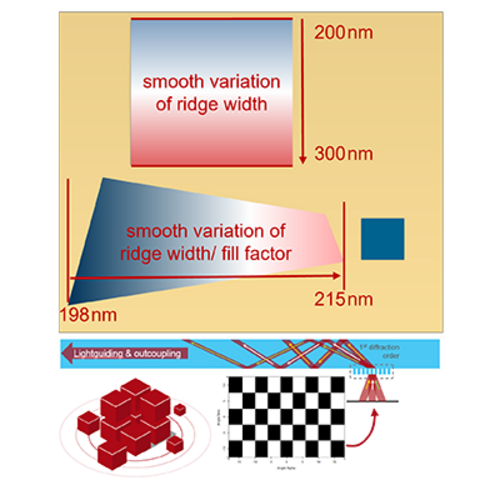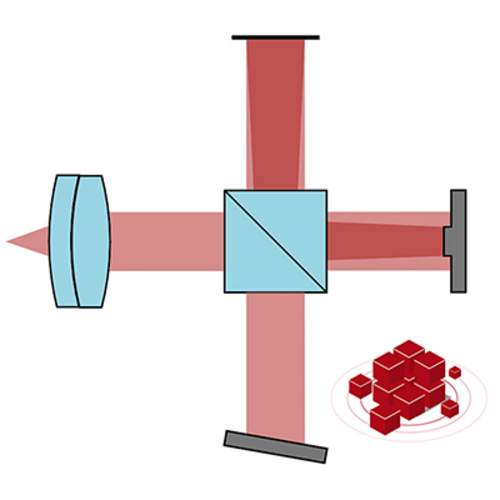Distributed Computing Package
Use network resources to speed up your optical design simulations.
Simulation Techniques on Multicore Computers
VirtualLab Fusion comes with many interoperable simulation techniques and a unique platform for connecting them. That provides simulations as accurate as needed and as fast as possible with respect to the selection of techniques. By applying parallelized algorithms in combination with a multicore computer, the simulation speed can be further increased. In VirtualLab Fusion most simulation algorithms enable parallel processing and benefit from multicore computers. How to significantly increase the simulation speed further is discussed next.
Collection of Elementary Simulation Tasks
Optical modeling and design tasks typically demand the processing of many elementary simulations. The reasons for that are manifold and include examples like the following ones.
- Polychromatic sources and ultrashort pulses are represented by a set of monochromatic fields which must be propagated through the system. Each monochromatic field leads to an elementary simulation.
- Multimode sources emit numerous lateral modes, e.g., in case of a multimode laser or an extended source like an LED. Each mode leads to an elementary simulation.
- Processing a full field of view (FOV), e.g., for imaging systems and AR glasses, results in an elementary simulation per field of the FOV.
- Scanning system parameters, e.g., moving the detector position to analyze the focal region, requires one elementary simulation per parameter configuration.
- Tolerancing analyzes many configurations to investigate the sensitivity of the optical system on variations of parameters. Each system configuration leads to an elementary simulation.
- Optimization with modern techniques, like the evolution algorithm, demands many elementary simulations per optimization step.
High-Speed Processing
In each scenario or its combinations, a collection of elementary simulations must be processed. Instead of performing one simulation after the other, distributed computing enables the concurrent processing of simulations of the collection. The achieved simulation speed directly scales with the size of the applied computer network.
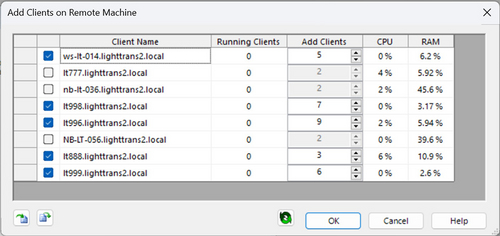
User-Friendly Distributed Computing
The generation of the collection of elementary simulations is done inside the Parameter Run as it is the case without distributed computing. No change of the workflow is needed. A dialogue enables the configuration and control of the computer network. Then, VirtualLab Fusion processes the collection of elementary simulations with the power of the assigned network. In short: users of VirtualLab Fusion enjoy the power of distributed computing with a few extra clicks.
